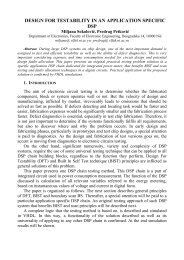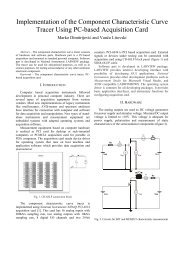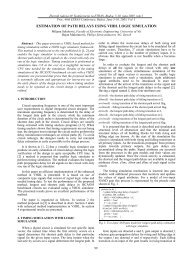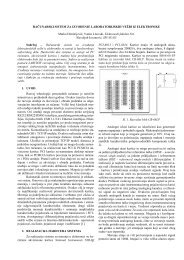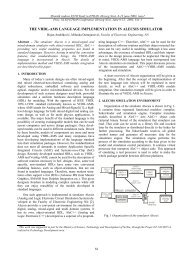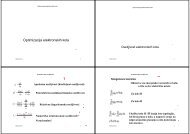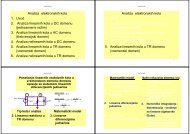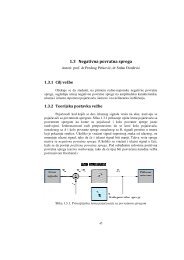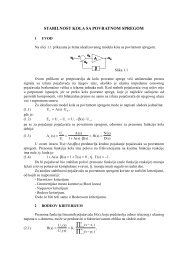6. Digital simulation in Alecsis - LEDA
6. Digital simulation in Alecsis - LEDA
6. Digital simulation in Alecsis - LEDA
Create successful ePaper yourself
Turn your PDF publications into a flip-book with our unique Google optimized e-Paper software.
<strong>6.</strong> <strong>Digital</strong> <strong>simulation</strong> <strong>in</strong> <strong>Alecsis</strong> 97Note: One can use attributes to pass <strong>in</strong>formation between processes. However, this cannot be a correct modelof real circuit behaviour. Therefore, attributes should not be used as another way of communication betweenprocesses. You should set their values <strong>in</strong> the preparation phase of the <strong>simulation</strong>, and later only use these values.Application of user-def<strong>in</strong>ed attributes will be illustrated on the problem of capacitance modell<strong>in</strong>g <strong>in</strong> thedigital circuit. Delay of a digital circuit depends l<strong>in</strong>early (as the first approximation) on the capacitance connected toits output. Capacitances <strong>in</strong> a digital system are <strong>in</strong>put/output (term<strong>in</strong>al) capacitances of the circuit, and the parasiticcapacitances of connections (l<strong>in</strong>ks). The former can be considered as module parameters, and passed as such tomodules. The later need to be connected to signals. This makes connection capacitance an ideal candidate for asignal attribute. These capacitances cannot be changed dur<strong>in</strong>g the <strong>simulation</strong>, which means we should declare anattribute of as signal as a class, whose private member is a total capacitance of the signal. The capacitance value willcome out <strong>in</strong> the preparatory phase of the <strong>simulation</strong>. Dur<strong>in</strong>g the <strong>simulation</strong> run, it will be used for calculation of themodule delay.typedef enum { 'x', '0', '1', 'z' } four_t;class four_att {double Tcap; // total capacitance of the signalpublic:four_att (double cap=0.0) { Tcap = cap; } // constructorvoid add_tcap(double cap) { Tcap += cap; }double tcap () { return Tcap; }};typedef four_t @ four_att four_full;The memory is allocated for local signals only -- formal signals just denote connections to other signals,which are declared as local <strong>in</strong> some modules that are on higher hierarchy levels. Therefore, constructor for attributesis activated with arguments that are given <strong>in</strong> local signal declaration.four_t @ four_att(0.2p) bus;four_full(0.1p) l<strong>in</strong>e[3:0];This way of declaration gives certa<strong>in</strong> capacitance to the signal (parasitic capacitance). The best moment fortotal capacitance calculation is after form<strong>in</strong>g of the hierarchical tree. Therefore, process synchronized aspost_structural should be used:module and2 (four_full a, b; four_full out y) {action (double C<strong>in</strong>, double delay, double skew) {process post_structural {(@a)->add_tcap (C<strong>in</strong>);(@b)->add_tcap (C<strong>in</strong>);}process (a, b) {y tcap();...}}}In every component of type and2, signals a and b would have <strong>in</strong>put capacitance C<strong>in</strong> (passed as actionparameter) added. In reality, formal signals a and b are just connections (other names) to some actual signalselsewhere, that have that <strong>in</strong>put capacitance added. Parameter skew is the coefficient of <strong>in</strong>crease of total delay withthe <strong>in</strong>crease of capacitance load at the output. Therefore, multiply<strong>in</strong>g value skew with the total capacitance of thesignal y, we get the delay added to the parameter delay (parameter delay is the delay when the output is notloaded with capacitances). Therefore, the total logic circuit's delay depends on fan<strong>in</strong> (the number of modulesl<strong>in</strong>ked to the output). We cannot access the value of capacitance, s<strong>in</strong>ce it is declared as private. By the use of an



